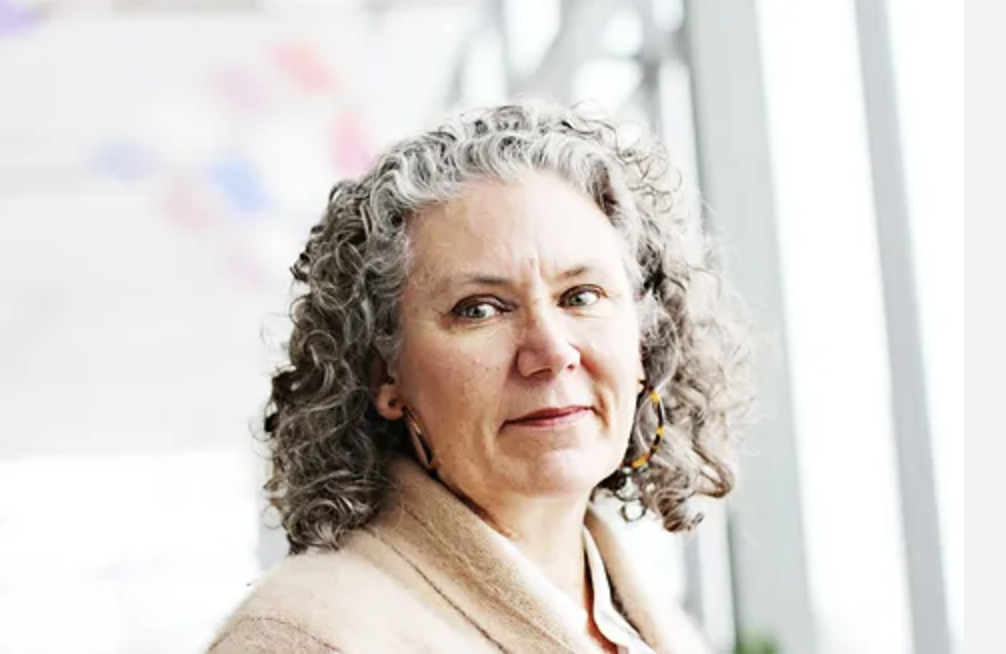UTAH WOMEN’S HISTORY / Writing Poetry to Connect with the Past: A Special Lesson from Utah Poet Laureate Lisa Bickmore
Writing Poetry to Connect with the Past: A Special Lesson from Utah Poet Laureate Lisa Bickmore
Lesson Overview
In this lesson, students will learn about Dr. Martha Hughes Cannon and her trailblazing life as a doctor, suffragist, public health advocate, and lawmaker in Utah’s early years. They will then write an ekphrastic poem in which they address Dr. Cannon’s statue (which currently stands in the Utah State Capitol).
In an optional extension, students could also learn about other advocates from Utah’s first years of statehood, such as Elizabeth A. Taylor, Hannah Kaaepa, Lucy Heppler, and/or Emmeline B. Wells, and write a poem addressing a photo of one of these women.
Recommended Instructional Time: 90 – 120 minutes
Intro for Educators from the Utah Poet Laureate
There is no substitute for learning history using social social studies ways of knowing: reading primary documents and narratives that synthesize and connect the story, while developing a sense of historic time. I believe that writing poetry can be a help in this project: through writing ekphrastic poetry—inviting students to imagine a person-to-person connection with historic figures through images or works of art (such as statuary), drawing on what is known about those figures and sources that give evidence of what those figures said—students can more fully sense and understand what the struggles and triumphs of those figures were, what they felt like, how they contrast with what the students are feeling here and now, and can help students to more fully realize their own connections to the past.
Something similar can be said of a documentary poetry approach [an additional lesson available soon]: students, invited to artfully and purposefully assemble historic materials (diaries, testimony, newspaper reports, primary documents) in order to form a deeply sourced historic picture—a kind of verbal collage—can more fully connect with the textual basis for understanding the past. I’m imagining that ekphrastic poetry might be more available for younger writers, with documentary poetry perhaps more appropriate for older writers, but with judicious preparation, either approach could work for any young writer.
– Lisa Bickmore, Utah State Poet Laureate
Activity
- Using the materials in the next section, choose one or more ways to introduce your students to Dr. Martha Hughes Cannon’s story: watch the video, read the informational text or trading card, and/or look at Brooke Smart’s illustration of Dr. Cannon.
- Explain that writing ekphrastic poetry is an opportunity to imagine a person-to-person connection with historic figures through images or works of art. Have the students read along (or read aloud) the sample poem, “Staring at the Night,” and discuss different elements of what the poem does.
- Show the picture of Dr. Cannon’s statue in the Utah State Capitol and explain that this statue was created in 2020 by sculptor Ben Hammond. It will soon be installed in the U.S. Capitol in Washington, DC so Dr. Cannon can represent Utah to the rest of the country.
- Have students work together either individually or in small groups to write their own poem addressing Dr. Cannon’s statue (or if you prefer, Brooke Smart’s illustration of Dr. Cannon). Students could use the following strategies to compose their poems:
- Student writers could describe the setting in which they encounter Dr. Cannon’s statue. This could be at the Utah State Capitol, if they have been there, or it could be an imagined setting like the U.S. Capitol.
- Description is one of the hallmarks of the ekphrastic poem, so students should describe the statue.
- Students could imagine themselves speaking to the statue – they can explore the difference between speaking to a still, inanimate object, and a live human being (to whom they do not have access).
- Students could imagine the statue speaking back to them – giving the statue a voice. What would the speaker say? What would the students expect the statue to say, and what surprising things might the statue say?
- Students could also construct almost an entire poem out of questions addressed to the statue.
- Students might also imagine a dialogue between themselves and the statue, or a dialogue between Martha Hughes Cannon and another historical figure.
Materials Needed
Guiding Questions
Why is Martha Hughes Cannon’s life important in Utah and U.S. history?
What would you like to ask Dr. Cannon about her life?
What do you think Utahns and Americans should learn from her story?
Adaptation/Extensions
In an optional adaptation or extension to this lesson, students could also learn about other advocates from Utah’s first years of statehood besides Martha Hughes Cannon, such as Elizabeth A. Taylor, Hannah Kaaepa, Lucy Heppler, and/or Emmeline B. Wells. They could then write a poem addressing Brooke Smart’s illustration of the woman or one of the photos found in their linked online biographies.
Tell us your experience
We’d love to hear about your experience in using this lesson to engage with your students so that we can better serve those who choose to use this lesson in the future.
Share Your Experience

 Statue of Martha Hughes Cannon by Ben Hammond, 2020
Statue of Martha Hughes Cannon by Ben Hammond, 2020  Closeup of Martha Hughes Cannon statue by Ben Hammond, 2020
Closeup of Martha Hughes Cannon statue by Ben Hammond, 2020